Backpacking in South America Routes – 3 Of The Best!
Best Time to Visit South America
South America is a great travel destination all year round. The best time to visit South America depends on the seasonal climate of the country you’re visiting, the activities you’re interested in, and the larger crowds and higher costs during peak tourist seasons.
In contrast to North America, the seasons of the southern hemisphere of South America (Argentina, Chile, Patagonia) are reversed with the summer months falling between November and February with winters between June and August. The northern hemisphere of South America (Ecuador, Northern Brazil, Colombia) follows seasonal changes more consistently with North America.
For example, the best time to visit Patagonia in the south is between November and February where harsh winters during June through September will close down most local operations. The best time to visit Peru is during the dry season between May and October with blue skies and warmer temperatures. Visitors will want to avoid the colder rainy season between January and March.
Clearly, South America weather plays an important role in planning a trip to South America. The type of activities and excursions you’re planning are also a primary factor in deciding when and where to visit. Check out our top 15 South America tours for custom vacation ideas from our travel experts. Each tour includes recommendations of the best activities and excursions with each destination.

My Recommendation
“In general, the best time to visit South America is in October and November as the springtime weather conditions make it comfortable in the cities, beaches, and mountains and nature’s beauty is on full display. Flowers are blooming, wildlife is much more active, and seasonal crowds and travel costs are fairly moderate.”
Rebecca Deering
South America Travel Expert
Best Places to Visit in South America – December, January, February
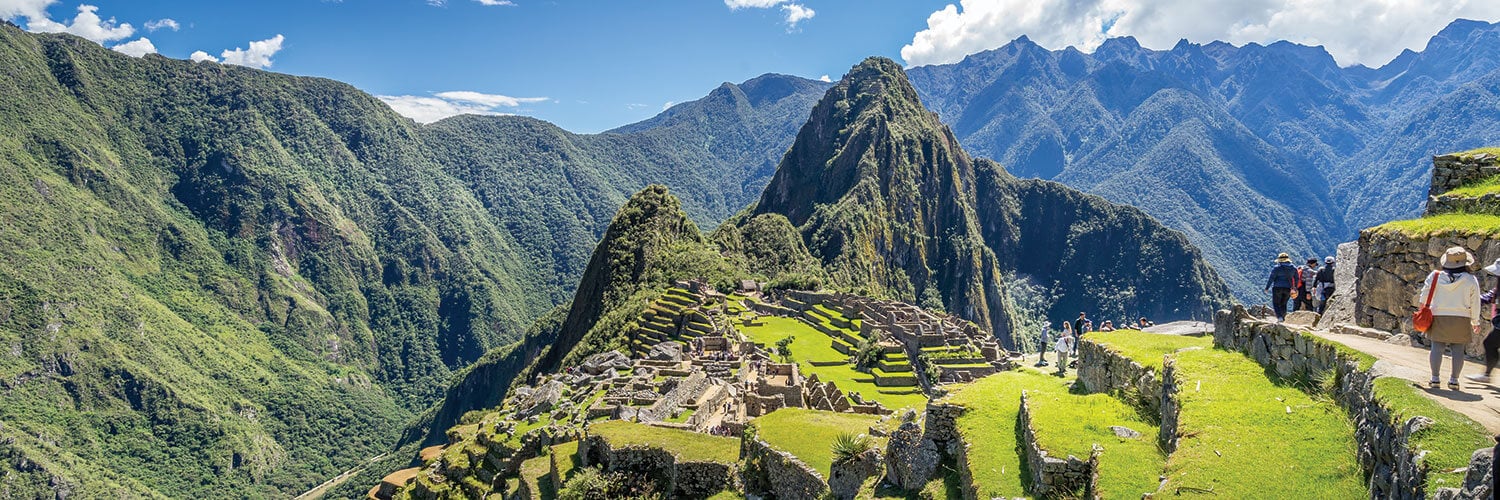
Summer in South America is from December to February. During this time, the continent enjoys warm temperatures, long days, and excellent conditions in the evenings for nighttime exploration.
In the summer season, travelers and locals alike enjoy the coastal towns for their fantastic beaches, ideal for lounging and sunbathing. Fernando de Noronha and Jericoacoara are two of our favorite northern beaches in Brazil.
In addition to the great weather, some of the world’s largest festivals take place in South America during the summer, such as Carnival in Brazil. In major metropolises, events from outdoor concerts, boutique markets, and even parades are a regular occurrence.
For the more adventurous and nature-oriented, the sunnier weather and longer days make destinations like Patagonia an ideal time to see some of the world’s most incredible natural wonders. However, in the Andean regions, like Bolivia, Peru, and Ecuador, summer is often rainy, ushering in their wet season.
Best Time to Visit Brazil
Brazil is largely tropical, leaving travelers sunkissed, relaxed, and refreshed. It is one of the best destinations in South America for nature. Even in its large bustling cities, like Rio de Janeiro, nature surrounds you. Butterflies inhabit the city streets and Tijuca Rainforest is scattered around the city. In northern Brazil, enjoy white-sand, secluded beaches, or embark deep into the dense Amazon Rainforest. With three rainforests and the Pantanal wetlands, Brazil is perfect for seeing South America’s rare and unique species of flora and fauna.
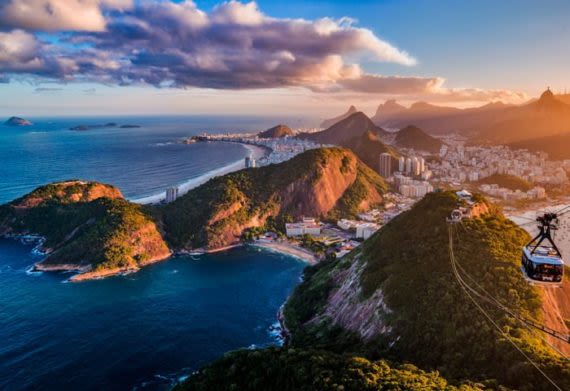
Best Time to Visit Ecuador
Ecuador has a variety of climates, regions, and landscapes, so it can be hard to determine when the best time to visit Ecuador is. Like most destinations, it depends on what you would like to do and the regions you would like to see and your preferences.
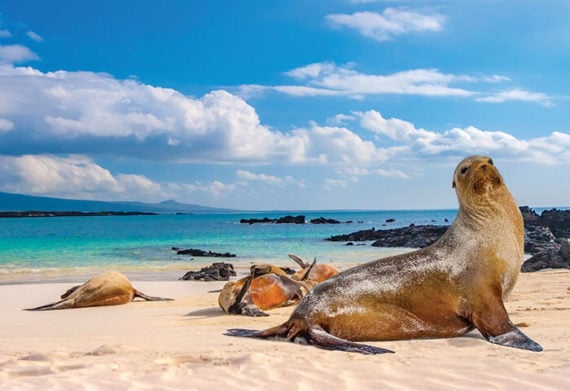
Best Time to Visit Antarctica
The Best time to visit Antarctica is the region’s summer period when the wildlife is the most active. This about November through March when the ice starts to break up enabling better access for ships. In November is when you may have a chance of seeing large icebergs which provide guests amazing photography opportunities. Travelers looking for the best deal might want to consider the beginning and the end of the season as the prices will be a little better. Antarctica is very popular and growing destination though, so let’s plan a trip to Antarctica before it gets too crowded!
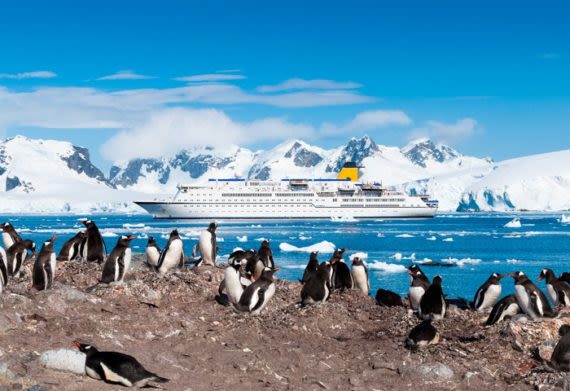
Best Places to Visit in South America – March, April, May
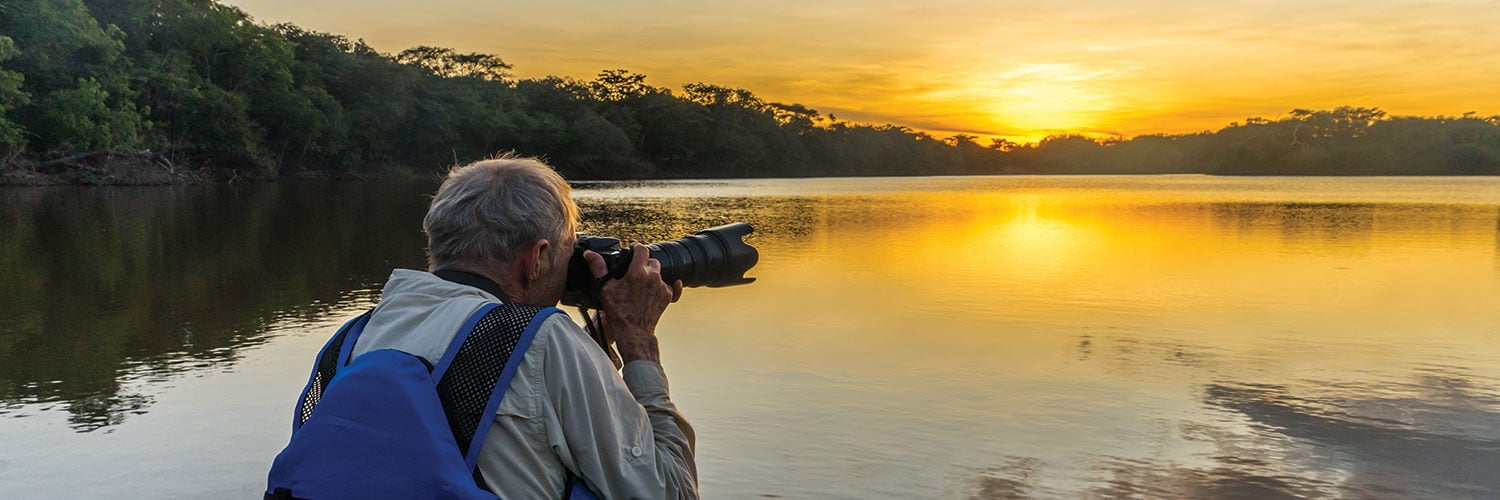
Fall in South America is from March to May. In general, this time of year results in fewer crowds and the price of transportation and hotels can drop throughout the continent as the busy summer season nears an end. Travelers will find great deals on hotels and tours at this time, while genuinely getting to experience the cities and cultures of the continent in relative peace compared to the busy summer.
In March, travelers can enjoy exploring the abundant marine life of the Peruvian Pacific, the volcanic islands in Brazil, the roaring waterfalls of Iguazu, and the incredible, untouched wildlife of the Galapagos.
Best Time to Visit the Amazon Rainforest
The Amazon Rainforest is an otherworldly experience. A place where rare wildlife can be just footsteps away from you. Spot the famous Jaguar, lurking caiman, colorful toucans, and more nestled in the lush rainforest. The best time to visit the Amazon Rainforest depends on the focus of your adventure.
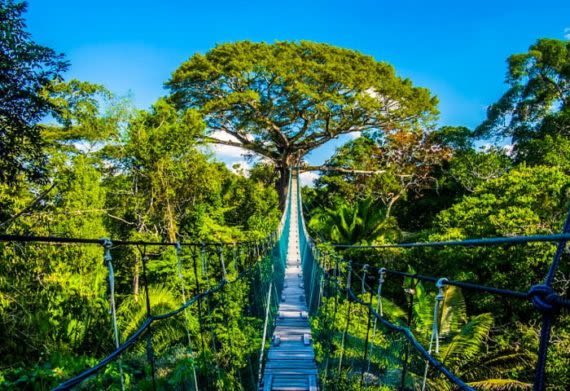
Best Time to Visit Machu Picchu
We consider Mid-April to June and from September to October to be the best time to visit Machu Picchu. This time of year coincides with dry and clear weather in the Andes Mountains. Travelers may reach Machu Picchu by train or trekking the Inca Trail.
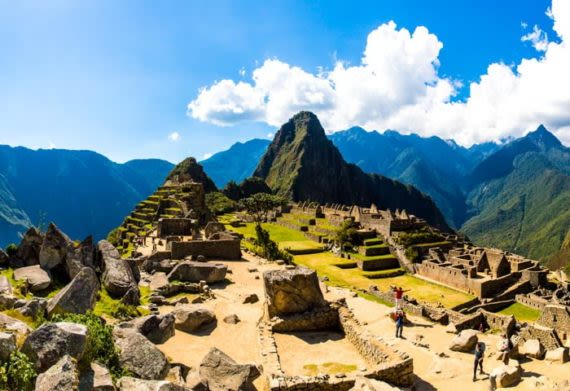
Best Time to Visit the Galapagos Islands
The Galapagos Islands are approximately on the equatorial line so the Galapagos enjoy year-round sunshine and warm weather. So really, anytime is the best time to visit the Galapagos; however, if you are interested in seeing specific types of wildlife, then you will want to explore our . We also have compiled some average temperatures in the chart below.
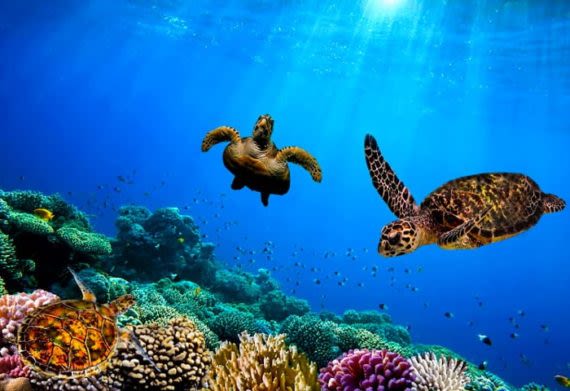
Best Time to Visit Venezuela
The dry season, from November to April, is usually the best time to visit Venezuela. This is the time of year that there is the least amount of rainfall and better warm sunny weather. The humidity is also lower making it a great time to explore the nature and landscape of Venezuela.
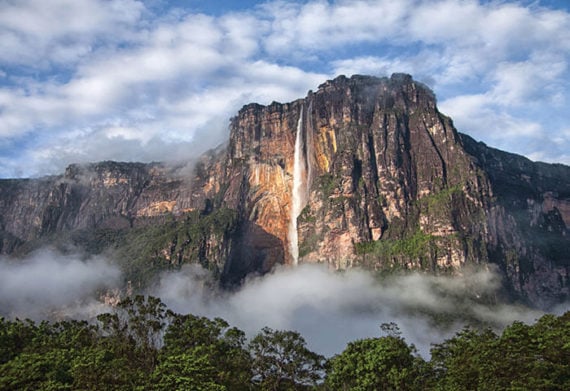
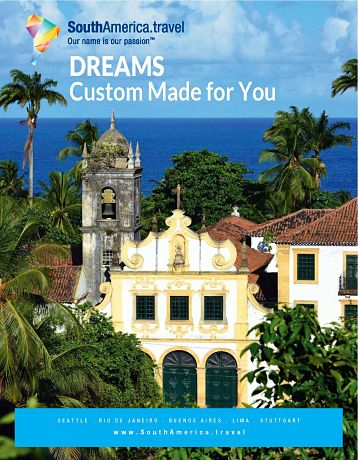
Download Your Free
South America Travel Guide
Download our FREE South America Travel Guide and get inspired to explore to South America. Browse through 26 pages of travel planning tips and ideas – a great resource for planning your dream vacation.
- Colorful maps and images
- Unique hotels within South America
- Inspiration for cruises, remote lodges and trains
- Wine, golf and adventure ideas
- 24 top tours of South America
Best Places to Visit in South America – June, July, August
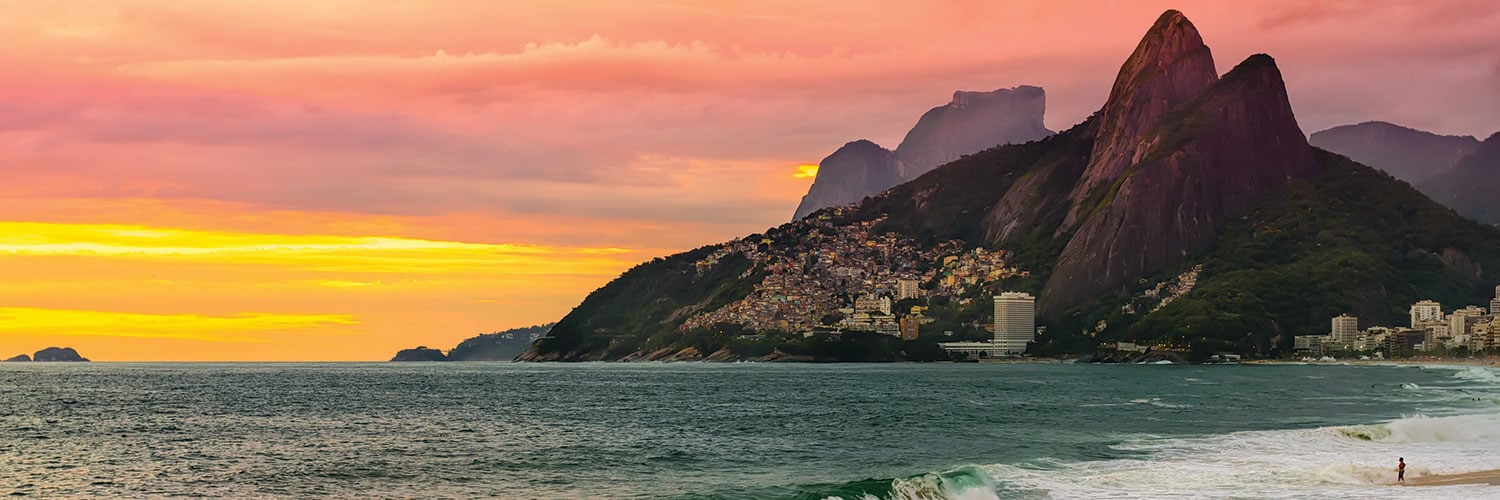
Unlike other continents, winter is an exciting season in South America, as it offers pleasant weather to every traveler. For visitors craving warm weather, Brazil, Ecuador, and Colombia are ideal. All three countries have a consistent, more temperate climate year-round.
For visitors who want to see Machu Picchu or the Andean regions of Ecuador, Bolivia, and Peru, these months perfectly align with their dry season. During this time, trails will reopen, and temperatures lower to a comfortable hiking level.
Winter sports enthusiasts will find no shortage of adventure during South America’s summer season. In Argentina and Chile, ski resorts and snow-covered mountains offer some fantastic skiing, snowboarding or cross country experiences throughout the winter.
Best Time to Visit Peru
Peru is one of the most popular destinations in South America – Machu Picchu being the huge draw. However, Peru boasts so many more beautiful sites and landscapes besides Machu Picchu which are perfect for families as well as solo and group travelers. Enjoy ancient ruins, colonial towns, and some of the world’s best cuisine.
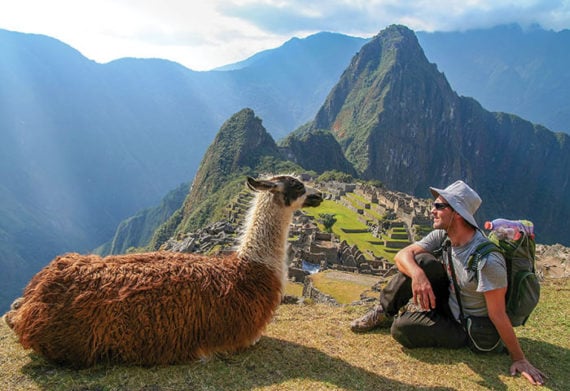
Best Time to Visit Colombia
The winter months of July and August are considered to be the best time to Visit Colombia. The summer months of July and August are also a great time to visit. These months have the lowest rainfall of the year and can also coincide with whale watching along the pacific coast.
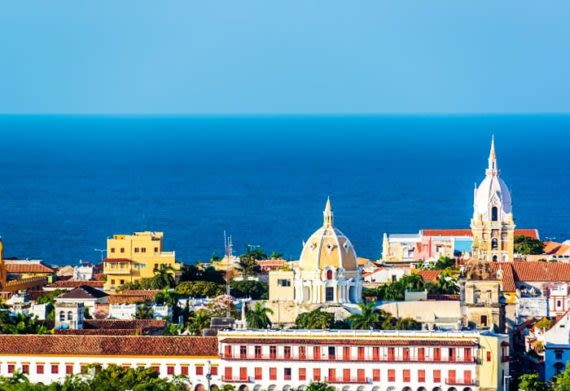
Best Time To Visit Bolivia
The Best Time To Visit Bolivia is the Dry Season, this is about from May To October. During this period, there are beautifully clear days with occasional rain showers. Although the days are considered shorter during this time, the sun still shines just as bright. The pleasant weather makes for worry-free road conditions and little barriers to transportation, meaning there’s nothing stopping you from exploring everything that Bolivia has to offer! If you enjoy hiking, trekking, bike riding, climbing or any other outdoor activities, the dry season is the best time to travel to Bolivia.
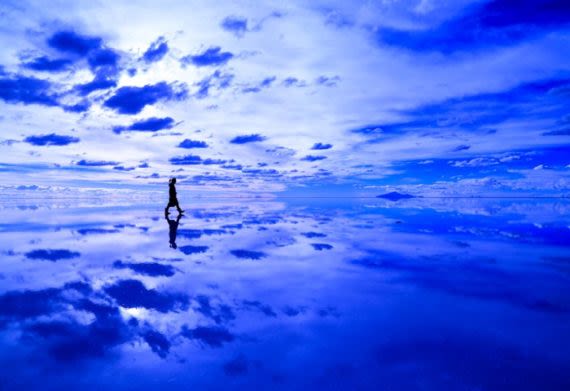
Best Places to Visit in South America – September, October, November
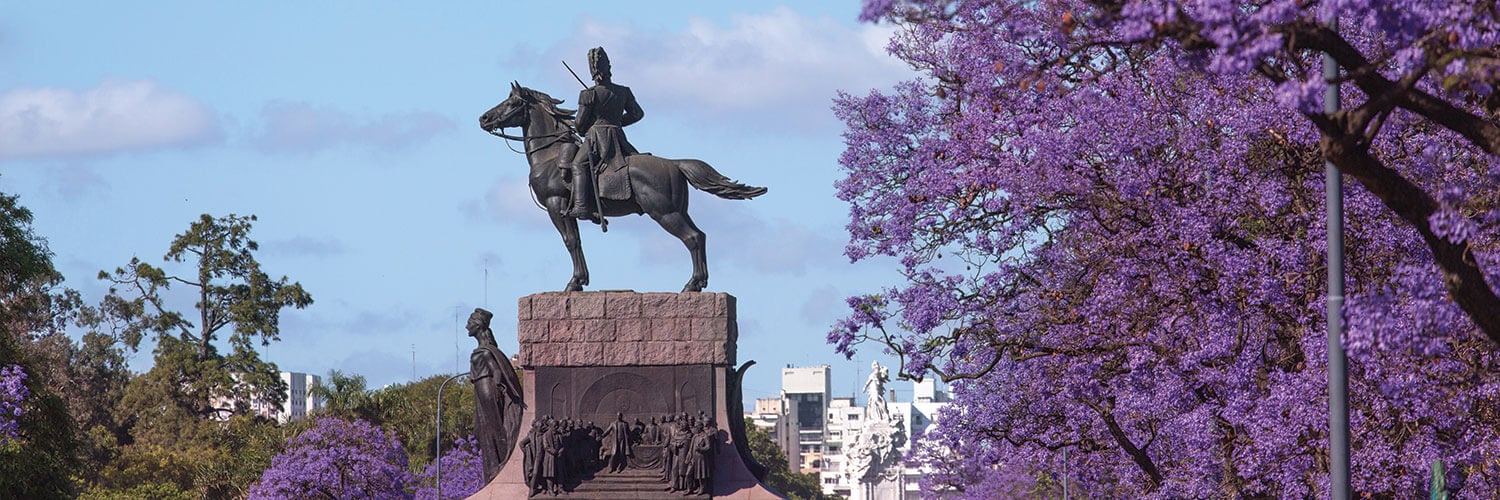
Spring is from September to November, and it is a fantastic time to visit South America. In general, spring marks the beginning of warmer weather throughout the continent. For example, in Buenos Aires, Argentina (the Paris of South America), travelers experience sunny, bright days and the beautiful bloom of Jacaranda trees that line its streets.
In tropical climates, like Colombia and the Amazon Rainforest, the seasons have little impact on weather changes, operating on their wet (approximately December – May) and dry seasons (June – December).
In addition to the warm and temperate weather conditions, travelers enjoy the added benefit of fewer crowds. It is during this time that European and North American families return to school and work after the northern hemisphere’s summer season, leaving South America even more enjoyable.
Best Time to Visit Argentina
Argentina is a popular destination for just about everything – its architecture, culture, wine, and natural landscapes keep travelers interested around the world. Taste the world renowned Malbec in Mendoza, dance the Tango in Buenos Aires, trek the glaciers of Argentine Patagonia, and explore its European inspired architecture.
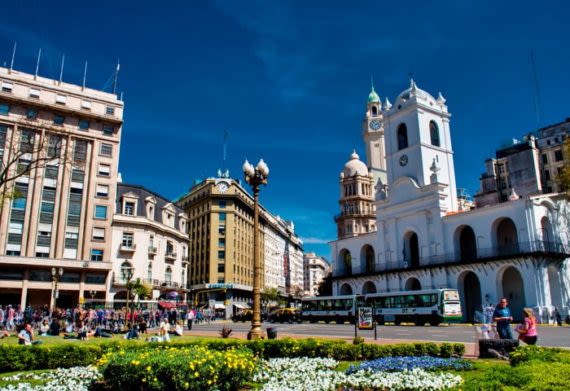
Best Time to Visit Chile
Chile is a great country to visit year round. Stretching over 4300 km long and almost halfway down the coast of South America, Chile offers a diverse range of climates. Depending on where you want to travel and what activities you would like to do, will determine the best time to visit Chile.
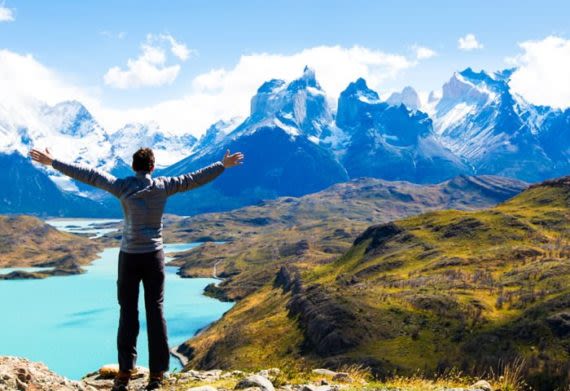
Best Time to Visit Patagonia
While Patagonia is arguably home to some of the most beautiful and breathtaking national parks in the Americas, it is also notorious for its unpredictable and ever-changing weather. We consider the shoulder seasons to be the best time to Visit Patagonia, but It’s tricky to give a blanket statement on when because it depends on what you are looking to do and see. Some venture to Patagonia for hiking, while others go for photography, relaxation, and adventure.
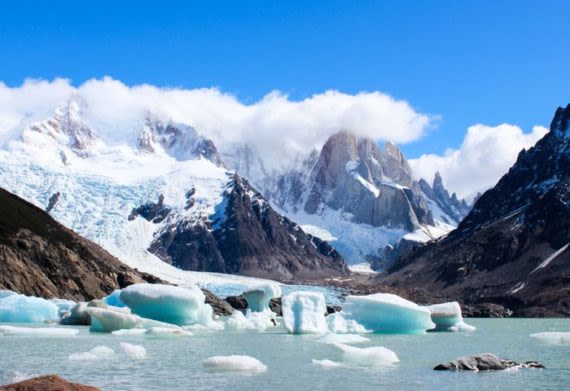
Best Time to Visit Paraguay
Travel to Paraguay is possible year round, but there are only two main seasons: hot, and extremely hot. The months of December through February are the peak hot months. Paraguay does not experience much rainfall, apart from the occasional cooling showers between March and November. We think travel to Paraguay is best any time of year, depending on your interest.
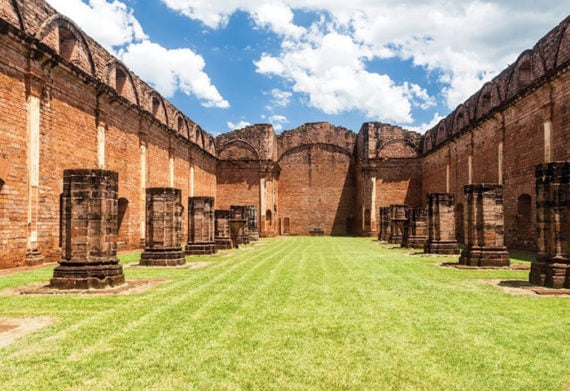
Best Time to Visit Guyana, French Guiana, and Suriname
We consider that from late August to September or February to March to be the best time to visit Guyana and its neighbors. The rainy period is over by then and everything is green and beautiful, Kaieteur Falls are running strong, and rainfall is not too much.
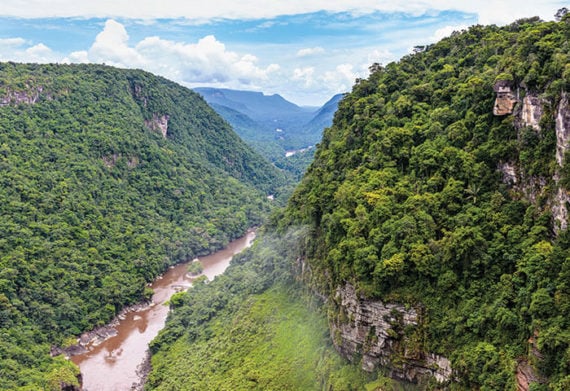
Best Time to Visit Uruguay
We consider October to March to be the best time to visit Uruguay, especially if you’d like to enjoy ocean breezes and beautiful blue skies. The wind coming off the ocean will keep you cool and you might even get a great suntan. While every season in Uruguay offers visitors ideal weather for many activities, the counties Autumn months also provide a great experience.
Backpacking in South America Routes – 3 Of The Best!

South America – the holy grail for many travellers. This vast continent has unrivalled natural wonders – from lush rainforest and unique biodiversity in Colombia, Brazil and Ecuador, to a mountain range that forms the spine of the continent and is only dwarfed by the Himalayas in Asia.
As you head further south towards Chile and Argentina, glacial lakes, national parks and empty deserts are your playgrounds. And that’s before we get to the towns – colonial splendour rubs shoulders with indigenous markets and Inca ruins inhabited by people who are hospitable, kind, at times a little bit crazy, and always ready for a party.
Related: (opens in new tab)
Backpacking Route South America – 3 Great Options
It’s difficult to know where to start in this enormous continent and one thing is for sure, no matter how many months you have planned for backpacking in South America – it’s impossible to cover it all. Distances are huge and bus journeys are loooong. If you’re short on time, you’re much better off choosing just a few countries to explore in depth rather than trying to do the whole damn continent!
Check out some of our other South America backpacking tips here!
Here, we present to you three popular itineraries through South America that take at least 3-6 months to complete. This could easily be extended to a year or more if you fit more places in between. If you’re travelling for a shorter amount of time, you can still use these itineraries to get inspiration and maybe break it up into shorter backpacking trips. Without further ado…
1. The Gringo Trail (The Classic South America Backpacking Route)

Like ‘gaijin’ in Japan, ‘gringo’ is a word used to mean foreigner in Latin America. It’s not offensive, but if you’re alone in a dark backstreet of Bogotá and someone’s growling gringo at you, give them what they want and run.
The Gringo Trail is a great way to see what Western South America has to offer. Yes, you can start this epic route anywhere from Mexico to Panama, but we’ll only be focusing on the route contained within the South American continent.
Starting in emerging backpacker gem Colombia, you’ll pass through the stunning cloud forests of Ecuador, forgotten Inca empires in Peru, an endless natural mirror in Bolivia’s salt flats, and from the moonscapes of the Atacama Desert and glaciers of Patagonia in Chile and Southern Argentina, before ending your trip in the bustling metropolis of Buenos Aires. Don’t miss a few of the amazing islands in South America either!
There are plenty of unforgettable attractions to see and adventure sports you can do on this itinerary so simply pick and choose what suits you best. Of course, don’t forget to check that your travel insurance covers you!
There are several variations on the Gringo Trail but stick to the Pan-American highway, making a few detours, and you’ll be on the right track! The proximity to South America’s longest road also means that the Gringo Trail is popular with those road-tripping South America. If you’re considering a little bit of independent exploration, check out our favourite road trip quotes for some inspiration!
Colombia
South America’s northernmost country is undergoing a transformation from its cartels and cocaine stereotype and has become a top destination for backpackers and tourists alike. And why wouldn’t it be?
A hugely diverse country with Caribbean beaches, tropical rainforest, colonial towns and some of the best nightlife on the whole continent means you’ll be itching to come back.
Read more here about backpacking Colombia and staying safe.

Start your South America Backpacking Itinerary in colourful Colombia!
Bogotá – Although not the most northerly city in Colombia, this is a great place to start your trip. Many international airlines fly here, and the rest of the country is easily accessible thanks to a reliable bus service. Before you start your trip though, spend a few days here trying the food, and some of the best nightlife that the country has to offer.
Ciudad Perdida – A 5-day trek might seem like an intimidating start to your travels, but this will be an experience you’ll never forget. The Lost City is one of the biggest pre-Columbian cities, and it was only discovered in 1975! Think Machu Picchu without the tourists. Although the ruins are stunning, the real attraction is the journey there. Just remember your to bring insect repellent. It could make or break your trip!
Cartagena – This Caribbean port is the largest in Colombia, but it’s best known for the beautifully preserved old town. It’s a UNESCO World Heritage site that feels like a fairy-tale.
Medellín – It’s impossible to talk about Medellín without mentioning the country’s most famous celebrity, Pablo Escobar. There’s much more than what you’ve seen in Narcos though, and it has undergone a lot of change in recent years to become a great destination for backpackers. Due to the number of expats in the city, there has been an increase in demand for Spanish schools. If you’re interested in brushing up on your language skills, check out this immersive package with Blink Spanish Experience.
If you have time, take a trip to Guatapé, filled with street art which makes it one of the most colourful pueblos in the world.
Ecuador
Ecuador is still developing as a tourist destination, meaning it’s a great time to visit. It has three distinct mainland environments: to the west, there’s the Pacific coast and world class beaches, the central Highlands have some of the Andes most dramatic volcanoes, and the Oriente in the East is the beginning of the Amazonian rainforest. All of that is before we get to the jewel in the crown – the Galapagos.
On a safety note, crossing the border from Colombia isn’t recommended at night, as there have been reports of armed bandits attacking buses.
Further reading: Ecuador Backpacking.

Sunny Otavalo, Ecuador.
Otavalo – Otavalo should be your first stop here in this glorious country. There’s great hiking, but the main attraction is the huge indigenous market where you can get everything from souvenirs to ponchos to alpacas in the animal section!
Quito – Spend a few days in Quito firstly to adjust to the altitude! The second highest capital city in the world will reward you with one of the largest historical centres in South America, and it’s a UNESCO world heritage site.
Spend the day people-watching in beautifully preserved and picturesque colonial squares, before throwing yourself into the nightlife of La Mariscal district at night. There are loads of great day trips from Quito, including Otavalo Market, Cotopaxi Volcano and Quilotoa Lake.
Baños – This is your base for outdoor adventures in Ecuador. Popular with gringos and Ecuadorian tourists, there’s a great range of hostels and international food. Did I mention there’s a swing over the edge of a cliff?
Guayaquil/Galapagos – You’re not going to need a lot of time in Guayaquil. The best thing here is the airport to the Galapagos islands.
Yes, this is going to be one of the most expensive parts of your trip, but it’s worth it to see wildlife unique to these volcanic islands, including marine iguanas, giant tortoises and hilarious boobies (no, not that kind. The birds).
Cuenca – Often labelled as Ecuador’s most picturesque city, Cuenca is not to be missed. Another UNESCO world heritage city centre boasts domed churches and wide-open squares makes it easy to see why Cuenca is so popular with expats. Nearby Cajas National Park and the Ingapirca ruins are worthwhile day trips for travellers. Cuenca is a great place to relax before a long bus ride to your next destination, which is…
Peru
Peru is considered one of the most intriguing countries in South America. From a vibrant street food and art scene in the capital Lima to the city of Cuzco and magical ruins of Machu Picchu, this is a country that enchants and seduces the majority of those who pass through it.
Read more about backpacking Peru!

Backpacking South America routes almost always include this place!
Lima – One of my the most diverse cities in South America. Whether you’re into history, art, or cuisine, there’s something for everyone here. Spend a few days soaking up the atmosphere. Foodies who aren’t on a budget should check out Central, one of the top 5 restaurants in the world (at the time of writing).
Nasca – Stop here to see the incredible Nasca Lines, ancient geoglyphs in the shape of animals, trees, and flowers. They can be seen from the viewing tower but are best viewed from a light aircraft. We recommend AeroNasca for their excellent safety record and positive reviews. Book your Nasca Lines flight with them here.
Cuzco – Yes, it’s thronged with tourists but don’t let that put you off. Cuzco is the oldest continuously inhabited city in South America and it is rich with pre-Columbian, Inca and Colonial history. It’s also the starting point for many tours to arguably South America’s biggest tourist draw – Machu Picchu.
If you want to avoid the crowds of the Inca trail, try the Salkantay trek, a lesser known trail through the jungle. If trekking isn’t your style, there is public transport too.
Puno/Lake Titicaca – Said to be the birthplace of the sun, Puno is the starting point of the Peruvian side of the highest navigable freshwater lake in the world, which straddles the border with Bolivia. The Uros floating islands are a great day trip from Puno, but you’ll be sharing with a lot of tourists!
Bolivia
Bolivia is a land of superlatives. It boasts the highest capital city, freshwater lake, and largest salt flat in the world. If you’re feeling particularly brave, you can take on the North Yungas Road, billed as the most dangerous in the world, a 56km stretch of gravel track which drops over 3,000m from La Paz to Coroico. This country is not for the faint-hearted! Book your Death Road cycling trip here.

Laguna Colorada, Bolivia
Start at Lake Titicaca before heading to the world’s highest capital city, which is…
La Paz – Mountains tower over the highest capital in the world, and one of the best ways to see it is by taking a ride on one of the many cable car lines that are here. There’s loads to do here, but if you want to try something really unusual, go to the witch market, where you can buy everything you need to conduct an Aymara ritual… including dried llama foetuses!
Salar de Uyuni – From December to March, the world’s largest salt flat becomes the world’s largest mirror. It’s a truly stunning site and will make for unforgettable photographs.
The only drawback? It’s much harder to get onto the salt flat thanks to the mud! Spend 3-4 days exploring the salt flats with a 4 x 4 tour, and whatever you do, don’t forget your extra 6 layers of clothing!
Sucre – This city is a little more chilled than the others you’ll be visiting in Bolivia. Named the white city, after the buildings which are made of volcanic stone, it’s a great place to spend a few days relaxing. Take some time to get out of the city to the ‘dinosaur dance floor,’ a quarry where you can see real dinosaur footprints!
Potosí – Don’t miss the city that bankrolled the Spanish empire! Founded by conquistadors in 1545 when silver ore was found here.
Once the biggest and wealthiest city in the Americas, nowadays Potosí is famous for its museums and colonial churches. You can visit the silver mines here and get an insight into the life of a miner, but be warned, the conditions are difficult and may prove hard for some travellers.
Chile
The longest country in the world passes through some of the world’s most stunning landscapes. Begin your Chilean adventure by stargazing in the Atacama Desert, a place incomparable to anywhere on Earth, before heading South through charming towns and cities, before meandering through the Lake District and finally on to the untamed wilderness of Patagonia, where innumerable adventures await. Be aware that journeys here can be very, very long!
Read more about backpacking Chile!

Grafitti in Valparaíso, Chile
Atacama Desert – San Pedro de Atacama is the base for exploring the driest place in the world. The Atacama once went 400 years without any rain being recorded!
Bring a thick jumper because it’s cold at night, but cloudless night skies and no light pollution make this an unbeatable stargazing location.
Valparaíso – Chile’s art capital is also a hugely colourful port, and has been home to many famous poets and painters. Explore the hills here, taking one of the 16 funiculars that were built in the late 19th and early 20th centuries. Make sure you bring your camera, you might not believe this place existed after you’ve left…
Santiago de Chile – Chile’s capital city is unmissable. A modern city, now rebuilt to withstand strong earthquakes offers great street food, wine and museums. In fact, it’s so good that it’s home to 40% of the country’s population!
Patagonia – There’s enough here for a trip in itself. Trek, kayak and horse-ride before camping under the stars in the land where it’s best to take things slow. Read our guide to Puerto Natales, an excellent stop in Chilean Patagonia!
Argentina
Next continue your South American adventure with a country famous for glaciers, wine and steak!
Further reading: Backpacking Argentina

The port at Ushuaia
Ushuaia – Cross over from Chile to reach the end of the world. The next stop from here is Antarctica! Take a cruise on the Beagle channel to see penguins or sea lions.
The best way to head back to the capital, Buenos Aires, is a 3 to 4-hour flight. It can be expensive, but the alternative night bus journey is loooooong.
Buenos Aires – End your trip on a high in one of the world’s most incredible cities. You could easily stay here for weeks! Most backpackers stay in the microcentro, where you’ll find most of the gourmet restaurants, fascinating museums and crazy nightlife.
And that’s the end of our Gringo Trail. Carry on reading to find out more of the best routes to take when travelling in South America!
2. The Super Loop – The Circular South America Travel Route

If you’ve got a lot of time on your hands, and you want to see even more of South America than you’d see in the Gringo Trail, try the Super South American loop.
The beauty of this trail is that you can start in any of the major cities (it’s almost always cheapest to fly into one of the capital cities).
Not only will you see the best cities that the continent has to offer, but there’s time to take in natural and historical wonders too. Often neglected on the Gringo Trail, our starting point is Brazil, more specifically, South America’s carnival capital, Rio de Janeiro.
Brazil
Ditch your Spanish phrasebook for the largest country in South America and test out your Portuguese (Yes I know it sounds nothing like how it’s written down).
Brazil has the ability to delight and frustrate in equal measure. There’s over 7,500 km of coastline here, so it would be downright daft not to spend a lot of your trip on the beach.
It’s also home to the mighty Amazon rainforest and river, where you can see river dolphins, jaguars, manatees, and an array of wildlife not found anywhere else on the planet. And all of this is before we get to the famous Rio carnival…
Read up on Backpacking Brazil!

Rio, not a bad looking city!
Rio de Janeiro – Skip the city centre and head straight for the south of Rio. Here’s where you’ll find the famous Copacabana, Flamengo, and Ipanema. The best hostels are here too.
Artistic neighbourhood Santa Teresa is well worth a visit, and Lapa is where you should go to enjoy the nightlife. Don’t forget to hike up to the massive statue of Christ which watches over the city for amazing views of Sugar Loaf Mountain.
São Paulo – If you like skyscrapers, this is your place. There are too many to count! The Southern Hemisphere’s largest city boasts some of the best nightlife, museums and restaurants on the continent. Because it’s home to over 12 million people, it can get quite hectic, so plan what you’re going to do in advance.
Iguazú Falls – Simply unmissable, the widest waterfalls in the world straddle the Brazil-Argentina border (you’ll need a visa to experience both sides).
The walkways mean you can pass right through the middle and get wet! If you hope over to Argentina, you’ll get to stare into the Devil’s throat, whereas you’ll get a better all-round view from the Brazilian side.
Uruguay
Often overlooked by a lot of travellers because of its small size and less big-ticket attractions than the likes of Peru, Argentina and Brazil, it’s a shame to miss out Uruguay, a nation that seems to avoid the crises that have plagued some of its neighbours.
One of South America’s more progressive countries which is great for backpackers. Don’t miss the national drink yerba mate, one of South America’s most popular drinks. It is a caffeine infusion which is more popular than coffee!
Read more about Uruguay backpacking!

Montevideo at night
Montevideo – Home to more than a third of Uruguay’s population, Montevideo is a great place for cycling or walking. The ten-mile Rambla separates the beach and the city centre, where you can find great restaurants (try parrilla), watch a play at the beautifully renovated Solis Theatre or visit the football museum, which celebrates the original hosts and winners of the World Cup. From here it’s just a short ferry ride over to your next stop – Buenos Aires.
Argentina
Buenos Aires – As I said earlier, you can’t miss one of South America’s greatest cities. For book nerds like me, head to El Ateneo Gran Splendid, a former theatre which has been converted into an awe-inspiring library.
Córdoba – There are seven universities in Argentina’s second city, giving it a youthful and lively vibe. Many art bars host live events of poetry, art, and music. Las Sierras de Córdoba are easily accessible too, making a great base for hiking and mountain biking.
Chile
Patagonia is just too damn big to fit into the loop, so head South West from Còrdoba to the capital Santiago, Chile’s main transport hub. Head to Valparaíso, then North for a spot of sandboarding in Iquique (read more about that in the next section) and into the Atacama desert before crossing the Bolivian border.
If you have plenty of time, there’s loads more to Chile so we’d really recommend spending a few weeks/months/years/forever there.

Santiago de Chile
Bolivia
You’ll be passing through Bolivia in the opposite direction from the way we took in the Gringo Trail. Make sure you visit the great train graveyard on the Salar de Uyuní, for a truly eerie site, before passing on to La Paz. Keep a close eye on your belongings here, you might just find that they’ve been taken on a holiday of their own…
Peru
No trip to South America is complete without visiting Machu Picchu. The lost city of the Incas was only discovered in 1911. Now, it’s one of the most visited destinations in South America, if not the world.
Use Cusco as your base before heading to Peru’s vibrant capital Lima. From here, catch a bus north stopping in Huaraz to take in the dramatic scenery, and even trying a bit of mountain biking before crossing the border into Ecuador.
Ecuador
Vilcabamba – Your first stop should be Vilcabamba. Drink in the laid-back vibe of this hippy village in the “valley of longevity.” (Even though the longevity is an urban myth).
If you don’t eat meat, it can sometimes be a little frustrating in some parts of the continent due to well… meat being part of nearly every meal. Stop in Vilcabamba where there are an array of vegan/veggie friendly restaurants to choose from, before hiking into fresh mountain air of the surrounding valleys.
Galapagos – Although The Galapagos are often overlooked by those travelling mainland Ecuador, no trip is complete without them. See the Gringo Trail for more information!

Friendly locals on the Galapagos islands.
Quito – Take the TelefériQo up the Eastern slope of the Pichincha volcano and look down on the vastness of Quito. If heights aren’t for you, firstly, why are you here?
Secondly, head to the Middle of the World for some crazy science experiments and to stand on both sides of the equator at once. Don’t miss a day trip to Otavalo Market to buy some souvenirs before heading into Colombia. It’s fine to repeat yourself for safety so I’ll say it again, AVOID crossing the border at night in either direction.
Colombia
We’re back to Colombia! And what is it most famous for? No, not cocaine. The other c-word. That’s right, coffee! After arriving in Bogotá, go towards Medellín but take a few days trying your hand at coffee picking in the Zona Cafetera.
Colombia is the world’s third biggest exporter and the coffee here is SERIOUSLY good. Carry on to Medellín where you have a choice of two national parks. Parque Nacional Natural Tayrona – This National Park is named after the indigenous Tayrona people, who were the first people in the nation, and ancient ruins have been found here. As well as this, Tayrona National Park is also a great place to check out some of Colombia’s best beaches. The area is incredibly beautiful and a must-see for travellers. Check out our guide to nearby Taganga!
That said, there are a few drawbacks. Food in the park is expensive, so for longer trips, it’s a good idea to visit a supermarket before heading into the park.

Tayrona National Park beaches are some of the best in Colombia!
Secondly, the stunningly beautiful beaches are great but exercise caution when going in the sea. A lot of travellers have got themselves into trouble due to the strong currents. What’s that? You’re not a beach bum? Don’t fret, there’s another option.
Parque Nacional Natural El Cocuy – A National Park totally different to Tayrona, first of all, because it’s home to one of Colombia’s highest peaks, Ritacumba Blanco at 5,330m.
This is a great place for climbing and trekking, but its better suited to experienced hikers and walkers. If you want to stay overnight here, you’ll need your own camping gear, but don’t let that stop you.
Your border crossing to Venezuela could be tricky. When researching, I found that the border from Cùcuta, the most direct route, was closed by the Venezuelan government. When open, there are buses and taxis which make the journey possible. Remember to move your clocks forward by half an hour!
Venezuela
Although beautiful, Venezuela’s political situation often means that safety is a big concern for many travellers. It can be done, however, but have your wits about you, especially in the capital Caracas.
Any trip should be carefully planned, and not a spur of the moment decision. You’ll be handsomely rewarded if you take the risk, with adventure sports, natural beauty and rich wildlife diversity all waiting to be discovered.
Read more about backpacking Venezuela!
Caracas – Venezuela’s main transport hub and capital city is missed out by many backpackers. The reason for this may have something to do with it often being billed as the murder capital of the world. That said, great food, and a spectacular setting means a trip here isn’t wasted. If you live.
Orinoco Delta – Named after the 3rd best womble, (for non-British readers… Google it. They’re hard to explain) and inspiring a truly insipid song by Enya, The Orinoco is in the shadow of the much larger Amazon, but that’s not a reason to miss this place out.
It’s huge – about the size of Belgium, and the richness of the wildlife diversity rivals the Amazon in a big way. The best way to see the Orinoco is by taking a tour – they usually cost around $200 dollars for three days.

Angel Falls, Venezuala.
Canaima/Salto de Angel (Angel Falls) – Canaima is a remote, indigenous village and the gateway to what most tourists flock to Venezuela to see – the Angel Falls.
Almost a kilometre high, these are the highest and most impressive waterfalls in the world. The falls are deep in the jungle and inaccessible by road, so fly to Canaima then take a boat to the falls, a journey of around 50km. It’s not a good idea to do this independently.
Brazil
Rounding off the loop, we’re back in Brazil to visit the central hub of the Amazon and an intriguing beach city.
Manaus – Manaus is the transport hub for the Amazon jungle. It’s not the most enticing or enthralling city, but it’s a great place to plan a jungle trip, usually lasting for 2-4 days. Pick up a tour at an agency here, it’s your best chance of seeing jaguars, caymans and sloths.
Salvador de Bahia – Located on Bahia’s coast, Salvador is a great city with a strong African heritage. Salvador comes in two parts – Cidade Baixa (lower city) and Cidade Alta (Upper city). The Cidade Alta is where you want to be for the nightlife and the town’s historical centre.

Salvador de Bahia
Salvador is the last stop on this loop before heading back to Rio de Janeiro. Fly home… or continue onto the Thrillseeker’s tour – the best places to try adventure sports in South America.
3. The Thrill Seeker’s Trail – The Alternative South America Itinerary

The third and final trail is the Thrill Seekers trail, and this encompasses the best adventure sports on offer on the continent. The route may seem a little less logical than the Gringo Trail and the Super South American Loop, but you can always fill in the gaps/massive distances with ideas from the other two tours.
You’ll certainly not be bored but be aware that adventure sports are going to set you back a fair bit. So, unless you have deep pockets, you might have to be selective!
We’ll be starting in Chile, as there’s a lot of variation in the adventure sports here. As Santiago is in the centre of the country, you can use it as a base and head in any direction.
Diving on Rapa Nui (Easter Island), Chile
I’ve already mentioned the Galapagos a couple of times, and while you can see sharks and turtles there, Easter Island trumps it thanks to the huge Moai statue in the coral reef. You’ll need to take a 6-hour flight from Santiago to reach Easter Island, but it’ll be worth every peso, even without the diving.
The W trek – Torres del Paine National Park, Chile.
Heading south from Santiago, Torres del Paine is one of the world’s most southerly National Parks and a part of the Chilean Lake District.
The 5-day hike covers 85km across vast glaciers, circling crystalline lakes, and ending with a view of the Torres del Paine at sunrise (if you time it right). You can either stay in lodges or rent camping gear from the nearby town of Puerto Natales.
Sandboarding, surfing and bodyboarding in Iquique, Chile.
Iquique is a coastal town that has great beaches, ideal for surfing and bodyboarding. However, I’d say the main attraction is sandboarding. Home to one of the biggest dunes in the world, the Cerro Dragon, you can catch air and surf here for ours, all with a view of the city and the endless coastline.
Skiing in Winter, Trekking in Summer, Bariloche, Argentina.
Head over the Chile Argentina border to Bariloche, the continent’s biggest ski resort. It’s much better to go from Santiago, as it’s a 23-hour bus journey from Buenos Aires.
Whichever way you choose to get there, you won’t regret it. Imagine Switzerland with Spanish speakers and you’re pretty much there. Out of ski season, there are some amazing trekking options here.

A view across the water in Bariloche, Argentina
Head north from here, either back through the Atacama Desert in Chile, or straight up north to Bolivia. Our next stop isn’t a destination, it’s a road. But it’s not just any road…
Biking on the North Yungas Road, Bolivia.
More ominously named Death Road, is a 64km stretch of gravel, mud, and whatever else is unsuitable for a driver without rally training, cut into the Cordillera Oriental mountain.
Starting in La Paz, it climbs to 4,650m before the Cumbre Pass swaps the Altiplano for the lush vegetation of the rainforest below, at a much more manageable 1,200m.
British TV show Top Gear filmed a special where they drove on this road, where you can see at times the road is not wide enough for two cars to pass. Here, normal road rules are disregarded as each driver tries to take the safest way they can. If you’re feeling particularly brave, lots of bike tour companies offer a downhill ride. To be honest, it’s probably safer than doing it in a car!
If you make it down Death Road, turn straight back around (ascending is at least 412% worse on a bicycle, even if you’re Chris Hoy,) and take a bus North. It’s a long journey to Huaraz, in Northern Peru, so break up your trip with a stop at one, or several, of the Peruvian gems mentioned earlier in the article.
Rock climbing, Huaraz, Peru.
Welcome to Peru’s adventure capital Huaraz. Although you can go trekking and mountaineering here, the main attraction of Huaraz is the rock climbing, which you can do with one of the several agencies.
Huaraz is part of the Cordillera Blanca, the most spectacular mountain range in Peru, and also home to the Sphinx. Be sure to come between May to September. Outside of high season, this place is a ghost town.
From Huaraz, cross the border into Ecuador, where there are two stops.
Biking on Chimborazo, the world’s highest volcano, Riobamba.
Most people don’t stick around in Riobamba, a city high up in the Andes with a large indigenous population. Although it doesn’t have a lot of tourist attractions, it sits in the shadow of the volcano (also the closest point on earth to the sun) Chimborazo.
You can climb the mountain if you have the gear to do it, or you can bike down from the second refuge, at 5,140m. The descent takes you through a moon-like landscape where they only living creatures are wild llama-like creatures called vicuñas.
The first part of the descent is tricky, and if you’re not careful you may find yourself flying over the handlebars in the direction of an inconveniently placed rock.
Whatever the hell you want, Baños.
Yes, Baños is one of Ecuador’s most popular destinations for local and foreign tourists alike, but there’s a good reason for that. Baños is Ecuador’s adventure capital, where the extensive list of activities includes mountain biking, zip lining, rafting, canyoneering, volcano climbing, and puenteing (like bungee jumping).
If this isn’t enough, it’s also the gateway to the Amazon jungle, and a short journey to the next town of Puyo, which can be used as a base for jungle lodges and wildlife watching.
If you want to head to the Amazon jungle, this is where we must part… Our trail is going to take us further North into Colombia, and then onto Venezuela.
Horseriding through ancient ruins, San Agustín.
An area of Colombia which is popular with tourists, due to being perceived as less of a safety risk than some of the bigger cities, San Agustín is one of the most important archaeological sites in South America.
There are over 500 statues made of volcanic rock here, of monsters, jaguars and frogs, as well as pottery and gold objects. When you’ve parked your horse, head to the Rio Magdalena, where you can challenge yourself with kayaking or white-water rafting.
Next, we’re heading northeast to Venezuela. It could be argued that if you want to feel adrenaline and terror there’s no better place than Caracas, but we’ll be focusing on getting a kick in Mérida instead.
Paragliding, Mérida.
Mérida is one of the safest cities in Venezuela. It’s also the adventure-sports capital of the country, and the cheapest place on the continent to do everything from rock-climbing, mountaineering to ziplining.
However, the iconic sport of Mérida is parapente (paragliding). You don’t need to be experienced, as most tour companies offer tandem flights. If you want to become experienced and offer your own tandem flights, you can take a 10-day course for around $1200.
Another unmissable hair-raiser near Mérida is Catatumbo. The mouth of the Catatumbo river is a weather phenomenon which means that at times it’s a near-constant electrical storm. Just make sure you don’t paraglide into it by accident.
And that brings us to the conclusion of the Thrillseeker’s trail. Although there are a lot of great places that aren’t on here, I’ve tried to make a list with as many different activities on as possible in the most logical route I could make. If you’re really upset your favourite place hasn’t made it, let us know in our Facebook community!

Dan Hall | The Curious Vicuna
Dan is an English teacher based in Ecuador. He’s visited over 40 countries and lived in Thailand, Spain, Italy. He’s currently on the trip of a lifetime in South America.
Source https://www.southamerica.travel/south-america/travel-info/best-time-to-visit
Source https://southamericabackpacker.com/backpacking-south-america-routes/#:~:text=Here,%20we%20present%20to%20you%20three%20popular%20itineraries,more%20if%20you%20fit%20more%20places%20in%20between.
Source